Array of Arrays: Elusive ETS in the Cascadia Subduction Zone
ETS, or 'episodic tremor and slip', is a recently discovered phenomenon in seismic research. Similar to earthquakes but much smaller in magnitude, ETS events are associated with the subduction zone of some convergent plate boundaries. One such region, the Cascadia subduction zone under the Puget Sound, is the focus of an experiment by Ken Creager's group at the University of Washington (UW), called Array of Arrays.
The PASSCAL Instrument Center supported research by the UW team, staging out of Sequim, Washington in June 2009. Eight arrays, each consisting of 10 Texan (single channel) and 10 RT130 (triple channel) data recorders were deployed across the northern Olympic Peninsula in hopes of catching the next event. The dense clustering of instrumentation within each array yields improved signal-to-noise ratios and higher-resolution results. The precise location of each tremor event can then be found via "beamforming", a process which reveals vectors pointing to the source of the disturbance.
Approximate location of the arrays in the upper Cascadia deployment region, and a sense of the higher terrain.
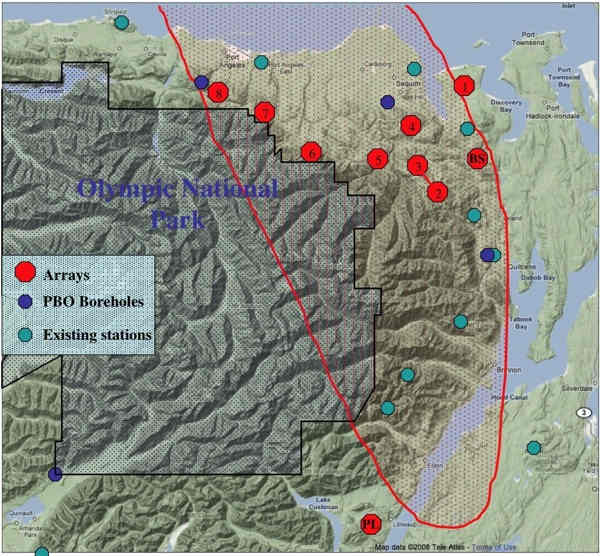

Principle Investigator Ken Creager helps unpack the PASSCAL shipment (left). Assisting are Joan Gomberg, Steve Malone, Maisie Nichols, and PASSCALian Noel Barstow.
Noel trains the crew (Maisie Nichols, Katie Foster, and Jessica Hawthorne) how to program the RT130 dataloggers with a Sony Clie (right).
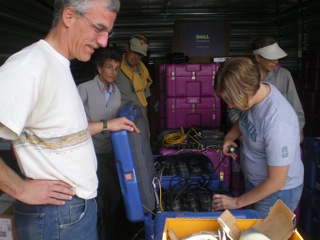
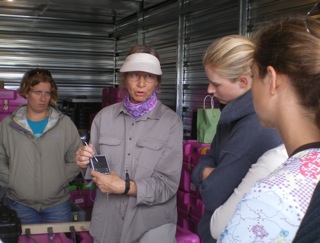
After a hearty breakfast each morning, the crew met at a rented storage unit to load equipment into their vehicles (left).
Due to vandalism concerns, only a handful of RT130 stations used solar panels for power. All others used aircell batteries, which were easier to transport and set up. Here, Noel Barstow and Abhi Ghosh install a solar-powered station at the Cat Lake array (right).
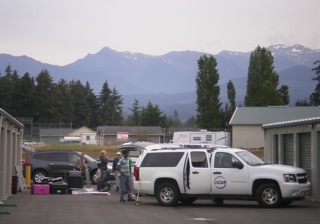
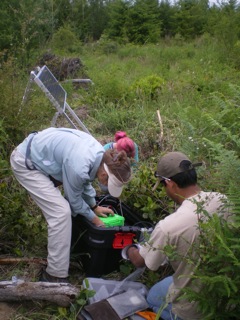
Students Katie Foster, Patricia MacQueen, and Aaron Wech are programming the Texans with a laptop computer. The Array of Arrays experiment was an unusual application for Texans, which are normally used in active-source experiments. Texans are powered with D-cell batteries which drain rather quickly. For a passive-source experiment like Array of Arrays, each Texan must be serviced every four days over the course of a two or three week-long ETS event.
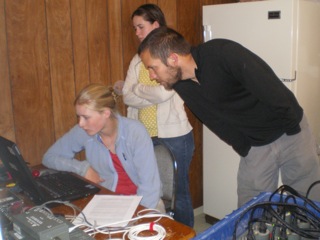
For more information, check out a video of the deployment experience.
- Home
- General Information
- Instrumentation
- Dataloggers
- Sensors
- All-In-One Systems
- Power Systems
- Field Procedures
- Controlled Sources
- Seismic Source Facility
- Magnetotelluric Systems at PASSCAL
- Ground Penetrating Radar
- Power and Memory Calculations Form
- Data Archiving
- Apply for a PI Account
- Experiment Scheduling
- Polar
- Important Hardware/Software Notes
- USArray
- Software

